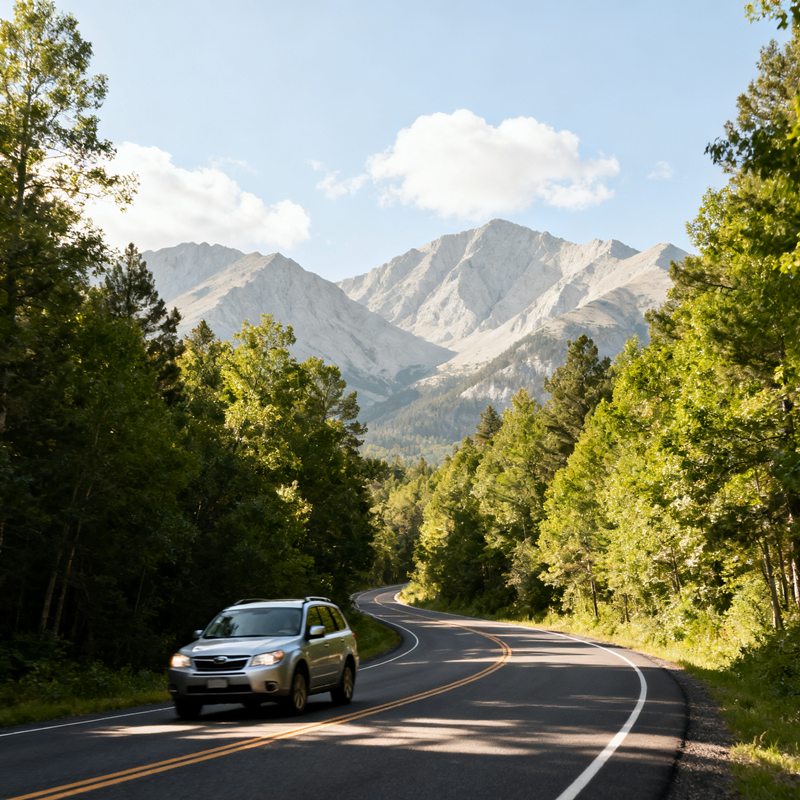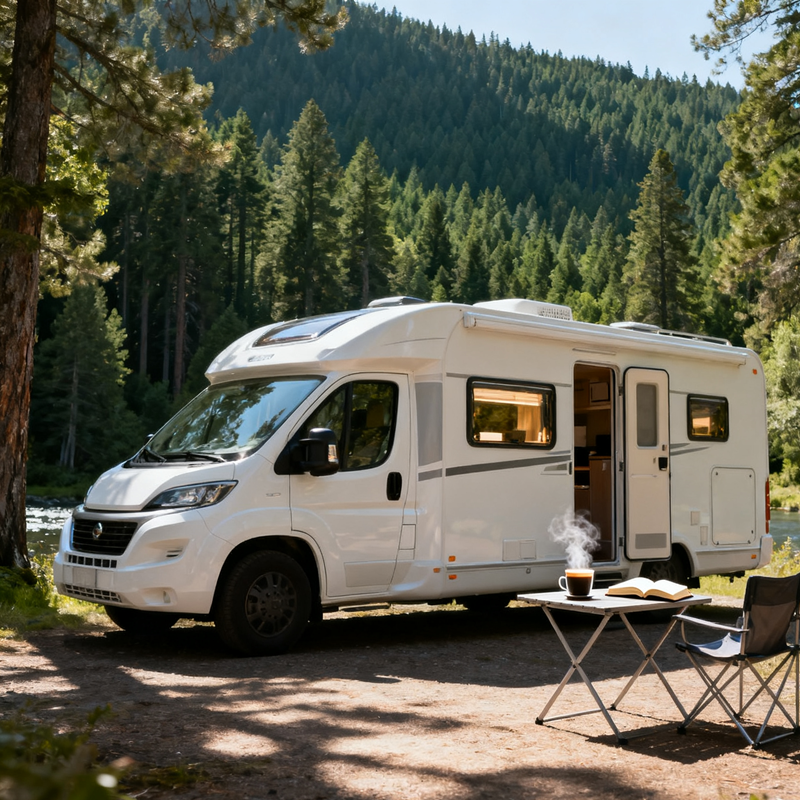Embarking on a long-distance driving trip is an exciting adventure. It promises freedom, new sights, and unforgettable memories. However, a successful journey requires careful planning and preparation. This comprehensive guide will walk you through every step to ensure your long-distance driving experience is safe, enjoyable, and stress-free. Proper preparation is the key to turning a potentially daunting long-distance driving endeavor into a smooth and pleasant adventure.
1. Plan Your Route Meticulously
Before you even think about hitting the road, planning your route is crucial. Good planning prevents last-minute stress and wrong turns.
Use reliable map applications like Google Maps or Waze. These tools provide real-time traffic updates. They can suggest the fastest path and help you avoid congestion. Always have a physical map as a backup. Technology can sometimes fail in remote areas.
Identify key stopping points along your long-distance driving route. Plan where you will take breaks, refuel, and perhaps spend the night. Knowing this in advance makes the trip more manageable. Break down the journey into segments. This makes a long-distance driving trip feel less overwhelming.
Consider scenic routes for part of the drive. They can make the long-distance driving experience more enjoyable. But balance beauty with practicality. Ensure the roads are suitable for your vehicle, especially in winter.
Check for any road closures or construction work. State Department of Transportation websites are great resources. This helps you avoid unexpected delays during your long-distance driving adventure.

2. Get Your Vehicle Thoroughly Checked
Your car is your most important partner on this trip. Its health is non-negotiable for safe long-distance driving. A breakdown far from home is stressful and costly.
Take your car to a trusted mechanic for a full inspection. Do this at least a week before your departure. This leaves time for any necessary repairs. The inspection should cover several key areas.
First, check the tires. Ensure they have adequate tread depth. The legal minimum is 2/32 of an inch, but more is better for safety. Check the tire pressure, including the spare tire. Properly inflated tires improve fuel efficiency, a must for long-distance driving.
Next, test the brakes. Worn-out brakes are a major safety hazard. Have your mechanic check the brake pads and fluid.
Check all fluids. This includes engine oil, coolant, transmission fluid, brake fluid, and windshield washer fluid. Top them up or replace them as needed. Fresh oil is vital for a long-distance driving trip.
Test the battery. A weak battery can fail without warning. Ensure the terminals are clean and corrosion-free.
Check the lights. Make sure all headlights, brake lights, turn signals, and hazard lights are working. You need to see and be seen, especially at night during long-distance driving.
Finally, ensure your air conditioning and heating systems work well. You will need comfort during those long hours on the road.
3. Pack an Emergency Road Kit
Even with perfect preparation, things can go wrong. Being prepared for emergencies is a critical part of long-distance driving safety.
Your emergency kit should be comprehensive. Here is a checklist of essential items:
First-Aid Kit: Include bandages, antiseptic wipes, pain relievers, and any personal medication.
Basic Tools: A multi-tool, screwdrivers, pliers, and an adjustable wrench can help with minor fixes.
Jumper Cables: A dead battery can happen to anyone. Know how to use them safely.
Tire Repair Kit and Portable Air Compressor: A flat tire doesn't have to ruin your day. A sealant can provide a temporary fix.
Flashlight and Extra Batteries: Essential for nighttime repairs or emergencies
Warning Devices: Reflective triangles or flares make your vehicle visible if you break down.
Water and Non-Perishable Snacks: Keep a gallon of water and energy bars. You might get stranded for a while.
Warm Blankets and Extra Clothes: If you’re traveling in cold climates, these can be lifesavers.
Phone Charger and Power Bank: Keep your phone charged to call for help or navigate.
Store this kit in an easy-to-access place in your car. Hope you never need it, but be glad it's there if you do on your long-distance driving trip.
4. Pack Smart for the Journey
Packing efficiently makes your long-distance driving trip more comfortable. Overpacking can clutter the car and reduce fuel efficiency.
Make a list of essentials a few days before you leave. Roll clothes instead of folding them to save space. Pack items you'll need easy access to, like snacks and water, in a separate bag.
Entertainment is crucial for passengers. Load tablets with movies and games. Create playlists for the drive. Audiobooks and podcasts are great for keeping the driver engaged.
Don't forget comfort items. Neck pillows, blankets, and sunglasses can greatly improve comfort during long-distance driving.
5. Manage Your Health and Energy Levels
Long-distance driving is physically demanding. Fatigue is a major cause of accidents. Prioritizing your well-being is as important as preparing your car.
Get plenty of sleep the night before you leave. Do not start a long-distance driving trip already tired.
Schedule regular breaks. Plan to stop every two hours or 100 miles. Get out of the car, stretch your legs, and walk around. This improves circulation and alertness.
Stay hydrated. Drink plenty of water throughout the drive. Avoid sugary drinks and excessive caffeine, as they can lead to energy crashes.
Eat light, healthy meals. Heavy, greasy food can make you feel sluggish and tired. Opt for fruits, nuts, and sandwiches.
Share the driving if possible. Having a second driver allows everyone to rest and makes the long-distance driving journey safer and less tiring.
6. Understand Driving Safety
Safety should always be your top priority on any long-distance driving adventure.
Always wear your seatbelt. Ensure all passengers do the same.
Obey all traffic laws. Stick to the speed limit. Speeding saves very little time on a long trip and drastically increases risk.
Maintain a safe following distance. The three-second rule is a minimum. Increase it to four or five seconds in bad weather.
Minimize distractions. Put your phone away. Use hands-free systems if you must take a call. Avoid eating messy food while driving.
Be aware of weather conditions. Check the forecast along your route before and during your drive. Adjust your plans if severe weather is expected. Rain, snow, and fog require slower speeds and greater caution.

7. Financial and Document Preparation
Ensure your paperwork is in order. Nothing ruins a trip faster than a legal issue.
Carry your driver's license, vehicle registration, and proof of insurance. Keep them in a safe but accessible place.
Check that your insurance is current and provides adequate coverage. Consider roadside assistance coverage. Companies like AAA can be invaluable for long-distance driving, offering towing, lockout service, and trip planning.
Inform your bank and credit card company of your travel plans. This prevents them from flagging your purchases as fraudulent and freezing your cards.
Have some cash on hand. While cards are widely accepted, some small towns or toll roads might require cash.
8. Final Checks Before You Go
The day has arrived. Run through a final pre-departure checklist.
Fuel Up: Start with a full tank of gas.
Check Tire Pressure Again: Do a quick visual check of your tires.
Adjust Mirrors and Seats: Ensure everything is positioned correctly for a comfortable drive.
Secure Luggage: Make sure all bags are secured and won't become projectiles in a sudden stop.
Set Your GPS: Program your first destination into your navigation system.
Check the Weather One Last Time: Look for any unexpected changes on your route.
Now, you are ready. Start your engine, take a deep breath, and begin your long-distance driving adventure. Drive safely and enjoy the journey!
9. Enhancing Nighttime and Adverse Condition Safety
A significant portion of long-distance driving can occur at night or in challenging weather. Visibility is paramount. Traditional headlights have limitations, especially in rain, fog, or complete darkness. This is where advanced technology can provide a critical safety advantage. For instance, thermal imaging cameras, like the Robofinity car thermal night vision , offer a powerful solution.
This device uses heat-signature technology to detect people, animals, and vehicles far beyond the reach of headlights—up to 200 meters away. It can penetrate rain, snow, and fog, providing a clear image of the road ahead when your eyes and standard lights struggle. Its AI-powered system provides alerts for potential collisions, giving you precious extra time to react. The easy installation makes it a practical upgrade for any vehicle, significantly boosting safety for those inevitable night-time stretches or unexpected weather during your long-distance driving trip.





Leave a comment
All comments are moderated before being published.
This site is protected by hCaptcha and the hCaptcha Privacy Policy and Terms of Service apply.